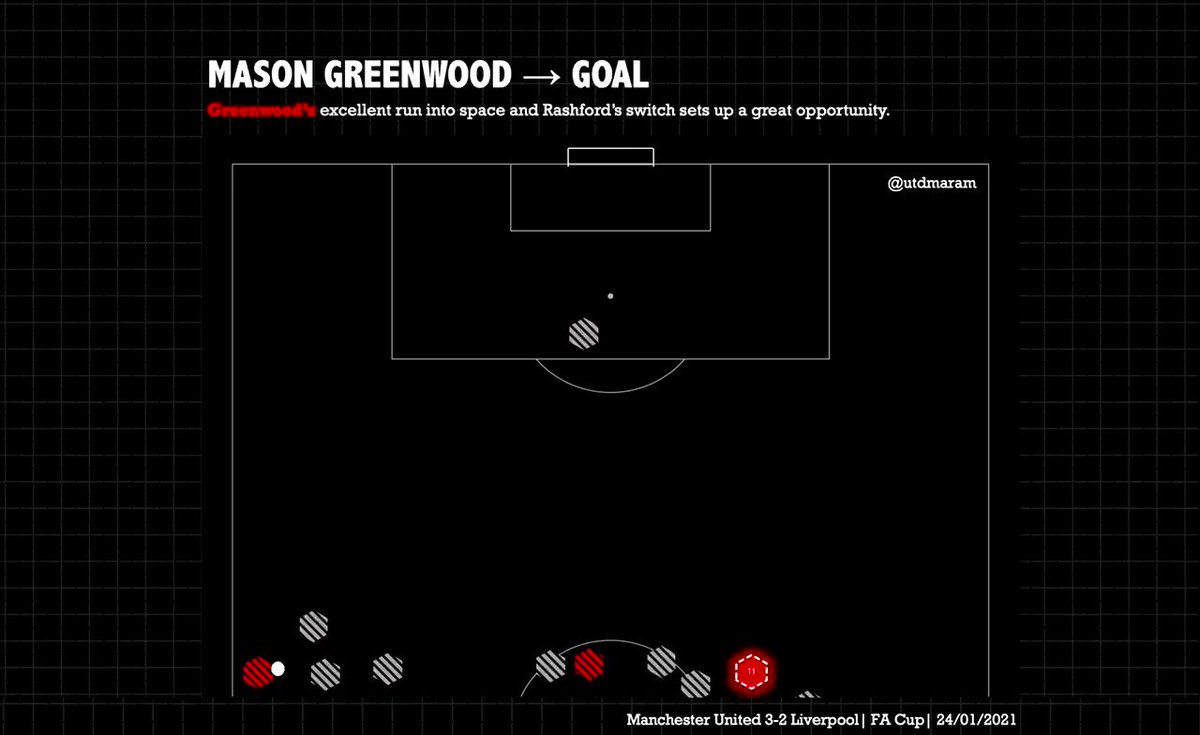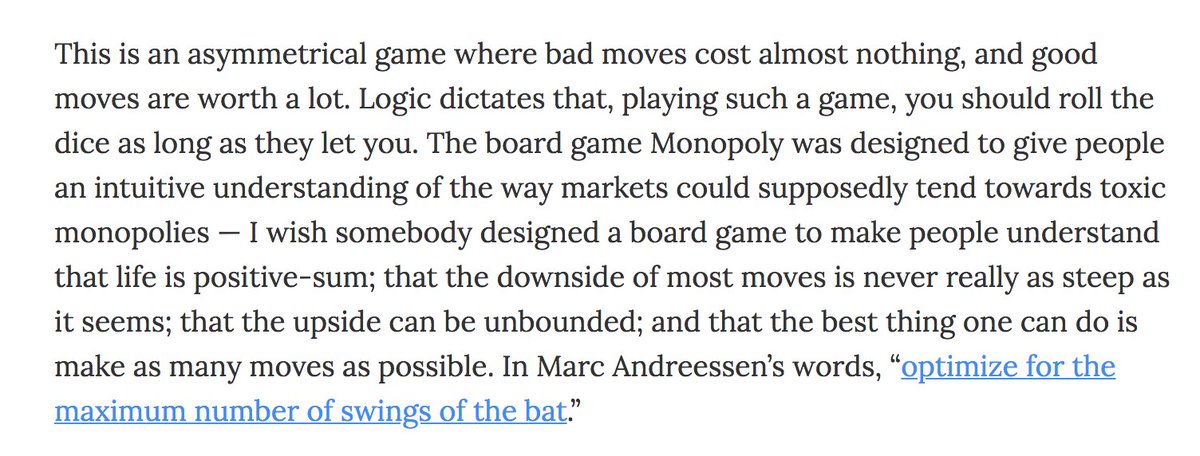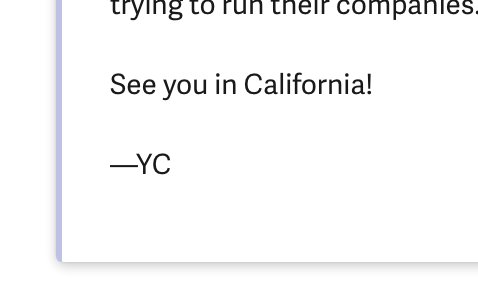#MUFC’s plan was to progress the ball wide through the flanks to find runners and/or switch the players — and it was well executed.
Issues:
(A) Henderson’s ball distribution was not well utilized to find forwards through long balls.
(B) Weak verticality/central presence.
This can be better seen through the territory Manchester United occupied in both halves — although they dominated through the left flank, they progressed well through the right as well.
The height of central presence increased as a result of substitutions: Fred/Bruno.
EXAMPLE: #MUFC’s dominance in the left was seen in multiple formats which include:
(A) Construction of triangles — to cross, create space and perform third-man runs.
(B) Rashford dribbles > cutbacks.
(C) Overlaps from Luke Shaw.
(D) Long balls from deep to find runners.
So how did #MUFC move the ball?
In the first half — they looked to build-up *and* progress to the left flank to create opportunities to exploit #LIV’s high line i.e long balls, overlaps.
Directness improved in the second half with a more dangerous forward presence.
How did #MUFC’s passing patterns look like?
(A) 1st phase, build-up, both centre halves had a high concentration of wide passes, to evade LIV’s press.
(B) 2nd phase, progression, Shaw had the highest forward proactivity — Pogba involved/directing the ball well to either flank.
The first goal conceded #MUFC conceded came from poor organization and tracking.
Ultimately, Shaw is too attracted to watching the ball and doesn’t track Salah’s run.
The second goal came from a sloppy loss of possession — vast space between the backline and midfield.
Let’s take a look at #MUFC’s equalizer.
This goal was the exact execution of Manchester United’s plan: exploit Liverpool’s high line using long balls and runs into the last line of their defense.
Greenwood was well composed in both timing his run and his finish.
Let’s look at the goal again, but instead, focus on Cavani’s run:
He runs in behind Fabinho and as he does, dummies as if to receive, only to bend — recognizes the vast space between the centre halves & reaches the penalty box unmarked.
An excellent quality to #MUFC’s attack.
How did #MUFC look to to press?
The short answer: they didn’t look to press high.
Long answer: #MUFC set up in a compact mid-block out of possession, forcing them wide as an attempt to drag them then exploit.
Sustainment of pressure allowed them to score the second.
EXAMPLE: Manchester United here looked to afford Liverpool space and time on the ball — then close them down wide at an attempt to (A) allow them to push forward and exploit the space left behind (B) force errors, recoveries and long balls.
Manchester United’s defensive actions in the opposition half — particularly in the left flank, allowed them to sustain the pressure of their attacks.
Compared to the last Liverpool encounter, #MUFC was much more proactive, with both goals initiated with defensive actions.
EXAMPLE:
(A) Van de Beek’s winning of the ball back here after a throw in — led to one of #MUFC’s most dangerous opportunities.
(B) Pogba’s tackle initiated Manchester United’s transition for Greenwood’s goal.
(C) Cavani’s interception initiated Rashford’s goal.
This was a performance that deserved a win — and most importantly it was done, for the first time in a very long time, in Manchester United’s own terms with a positive selection.
The plan, execution *and* hard work of the players allowed this.
END.














